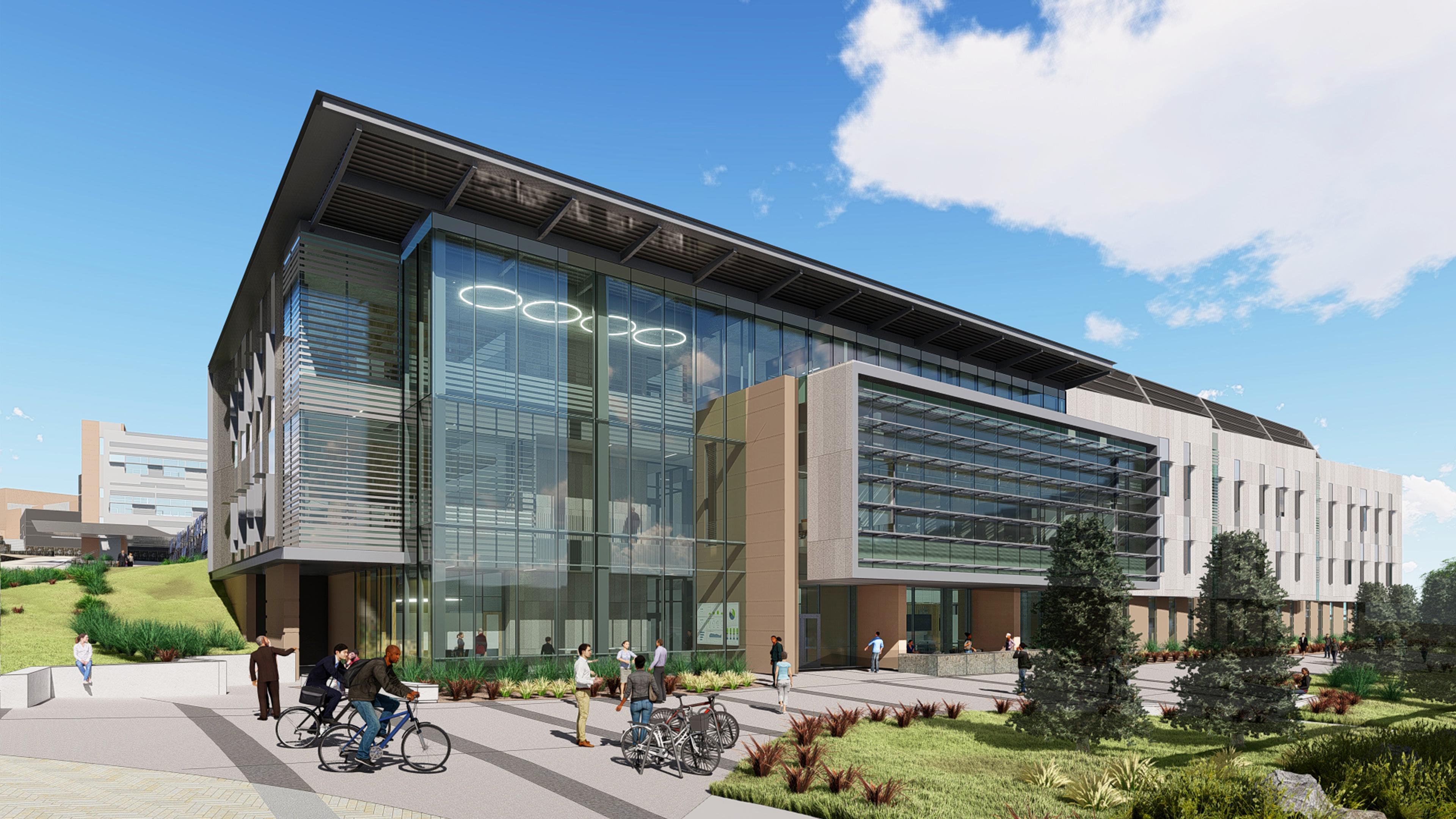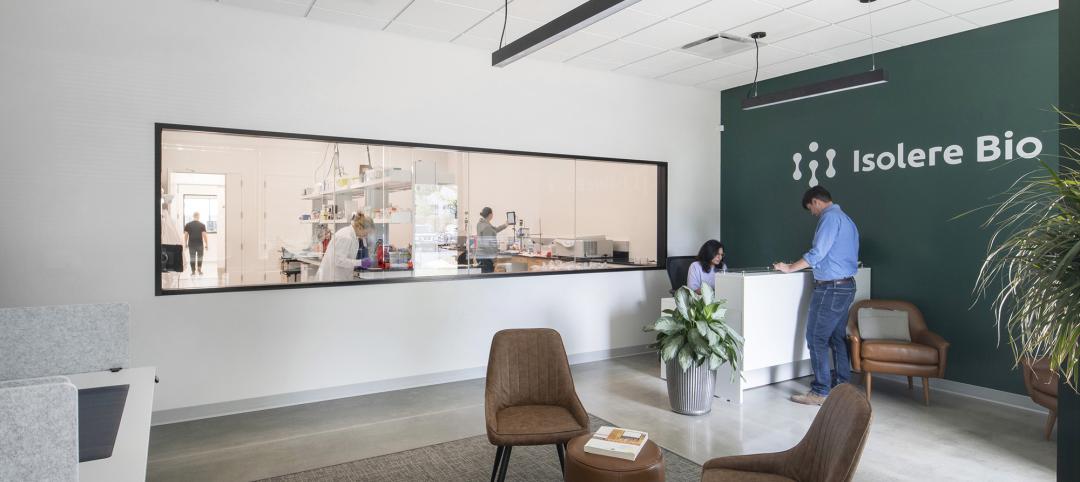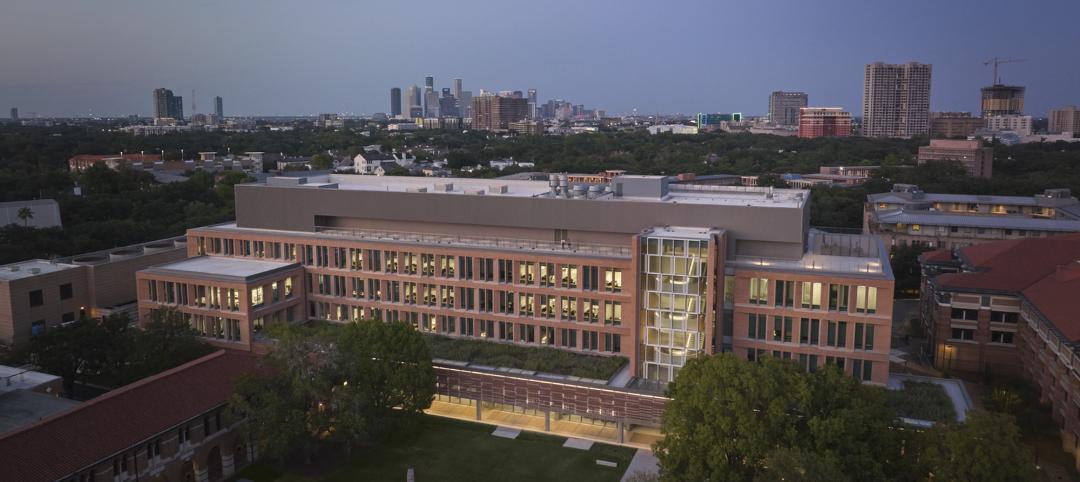The U.S. Department of Energy’s National Renewable Energy Laboratory (NREL) has selected JE Dunn Construction and SmithGroup as the design-build team for a new laboratory facility that will accelerate market-ready products needed for a clean energy transition.
As the new face of NREL’s South Table Mountain Campus in Golden, Colo., the 127,000-sf Energy Materials and Processing at Scale (EMAPS) laboratory will create a direct path from lab-scale materials and process innovations to pilot-scale integration and production. The project is slated to break ground in late 2024.
The laboratory’s design will provide opportunities for engineers, scientists, industry partners, and other DOE laboratories to work together in shared lab facilities focused on clean energy innovations. This collaborative, multidisciplinary approach will accelerate the process scale-up and market adoption of advanced energy materials.
Energy storage, advanced manufacturing among clean energy initiatives
Specifically, EMAPS will enable materials and process innovations in energy storage, advanced manufacturing, grid modernization, and net-zero chemicals and fuels for transportation and industrial decarbonization.
In addition, the laboratory will address end-of-life and circularity challenges across multiple energy technology platforms with a focus on polymers, packaging, and waste streams during and after production.
With building design now underway, EMAP will provide modern, open, and flexible spaces that can accommodate rapid experimentation among researchers. Featuring a three-story collaborative lab and office tower, the center will facilitate flexibility and reconfigurability to serve different research insights and needs. Researchers will be able to move easily from workstation computers to testing in labs to manufacturing testing in pilot bays.
The design will align with NREL’s focus on sustainability, solar orientation and daylighting, energy efficiency, and site preservation. With its sustainable, high-performance design, EMAPS will aim for a minimum of LEED Gold certification.
A decade ago, JE Dunn and SmithGroup partnered with NREL to complete the Energy Systems Integration Facility (ESIF), a 180,000-sf research building adjacent to the future site of EMAPS.
On the Building Team:
Owner: U.S. Department of Energy’s National Renewable Energy Laboratory (NREL)
Design architect, architect of record, and MEP engineer: SmithGroup
Structural engineer: Martin/Martin
General contractor: JE Dunn Construction
Related Stories
Laboratories | Apr 22, 2024
Why lab designers should aim to ‘speak the language’ of scientists
Learning more about the scientific work being done in the lab gives designers of those spaces an edge, according to Adrian Walters, AIA, LEED AP BD+C, Principal and Director of SMMA's Science & Technology team.
Laboratories | Apr 15, 2024
HGA unveils plans to transform an abandoned rock quarry into a new research and innovation campus
In the coastal town of Manchester-by-the-Sea, Mass., an abandoned rock quarry will be transformed into a new research and innovation campus designed by HGA. The campus will reuse and upcycle the granite left onsite. The project for Cell Signaling Technology (CST), a life sciences technology company, will turn an environmentally depleted site into a net-zero laboratory campus, with building electrification and onsite renewables.
Laboratories | Apr 12, 2024
Life science construction completions will peak this year, then drop off substantially
There will be a record amount of construction completions in the U.S. life science market in 2024, followed by a dramatic drop in 2025, according to CBRE. In 2024, 21.3 million sf of life science space will be completed in the 13 largest U.S. markets. That’s up from 13.9 million sf last year and 5.6 million sf in 2022.
Sustainability | Mar 21, 2024
World’s first TRUE-certified building project completed in California
GENESIS Marina, an expansive laboratory and office campus in Brisbane, Calif., is the world’s first Total Resource Use and Efficiency (TRUE)-certified construction endeavor. The certification recognizes projects that achieve outstanding levels of resource efficiency through waste reduction, reuse, and recycling practices.
Adaptive Reuse | Mar 7, 2024
3 key considerations when converting a warehouse to a laboratory
Does your warehouse facility fit the profile for a successful laboratory conversion that can demand higher rents and lower vacancy rates? Here are three important considerations to factor before proceeding.
University Buildings | Feb 21, 2024
University design to help meet the demand for health professionals
Virginia Commonwealth University is a Page client, and the Dean of the College of Health Professions took time to talk about a pressing healthcare industry need that schools—and architects—can help address.
Urban Planning | Feb 5, 2024
Lessons learned from 70 years of building cities
As Sasaki looks back on 70 years of practice, we’re also looking to the future of cities. While we can’t predict what will be, we do know the needs of cities are as diverse as their scale, climate, economy, governance, and culture.
Laboratories | Jan 25, 2024
Tactical issues for renovating university research buildings
Matthew Plecity, AIA, ASLA, Principal, GBBN, highlights the connection between the built environment and laboratory research, and weighs the benefits of renovation vs. new construction.
Laboratories | Jan 22, 2024
Speculative vs purpose-built labs: Pros and cons
Hanbury's George L. Kemper, AIA and R. David Cole, AIA share the unique advantages and challenges of both spec. and purpose-build labs.
University Buildings | Jan 18, 2024
Houston’s Rice University opens the largest research facility on its core campus
Designed by Skidmore, Owings & Merrill (SOM), the 251,400-sf building provides students and researchers with state-of-the-art laboratories, classrooms, offices, and a cafe, in addition to multiple gathering spaces.

















